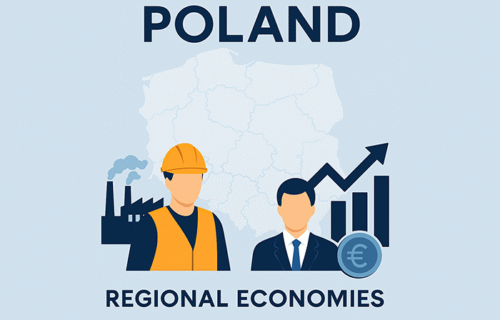Poland’s regional economies in 2025 reveal striking contrasts, with some areas enjoying strong growth and others facing demographic and structural challenges.
The Mazowieckie region, anchored by the capital Warsaw, continues to be the most populous and economically advanced, although its pace of growth has moderated compared with the surging metropolitan centers of Kraków and Wrocław. In contrast, eastern regions such as Podlaskie and Lubelskie remain affected by depopulation and aging demographics, raising concerns over future labor availability and the sustainability of public services.
Economic performance also reflects these divides. Mazowieckie leads in GDP per capita, driven by financial services and a thriving technology sector. Wielkopolskie and Śląskie record solid industrial and manufacturing activity, though heavy industry in Śląskie faces pressure from the ongoing energy transition. Meanwhile, the eastern and northern regions lag, with agriculture continuing to dominate in Lubelskie, Podkarpackie, and Warmia-Masuria.
Housing and construction activity is concentrated in metropolitan hubs. Warsaw, Kraków, and Wrocław report robust levels of residential development, supported by favorable financing conditions and strong mortgage demand. Smaller cities in the east, however, continue to struggle with underinvestment, though EU regional funds are being channeled into urban renewal and infrastructure improvements aimed at narrowing the gap.
Agriculture remains a pillar in several regions, with Lubelskie and Podkarpackie leading in crop production and Podlaskie maintaining its strength in dairy and livestock. Industrial activity clusters in Śląskie, where steel and automotive remain significant, as well as in Wielkopolskie, with its focus on machinery and food processing, and Dolnośląskie, which is expanding electronics production and logistics.
The services economy continues to expand nationwide, with information technology and business services growing particularly quickly in Warsaw, Kraków, and Gdańsk. Yet disparities remain visible, as rural and peripheral regions still rely heavily on agriculture and lower-wage industries. Analysts suggest that ongoing investment in infrastructure, together with support from EU funds, will remain essential in bridging these gaps.
The Regions of Poland 2025 report ultimately highlights a country experiencing a dual reality: vibrant growth in metropolitan hubs on the one hand, and persistent stagnation in parts of the east and northeast on the other. Policymakers are confronted with the challenge of fostering competitiveness in Poland’s most dynamic cities while at the same time ensuring balanced development and social cohesion across all regions.
Source: Statistics Poland
